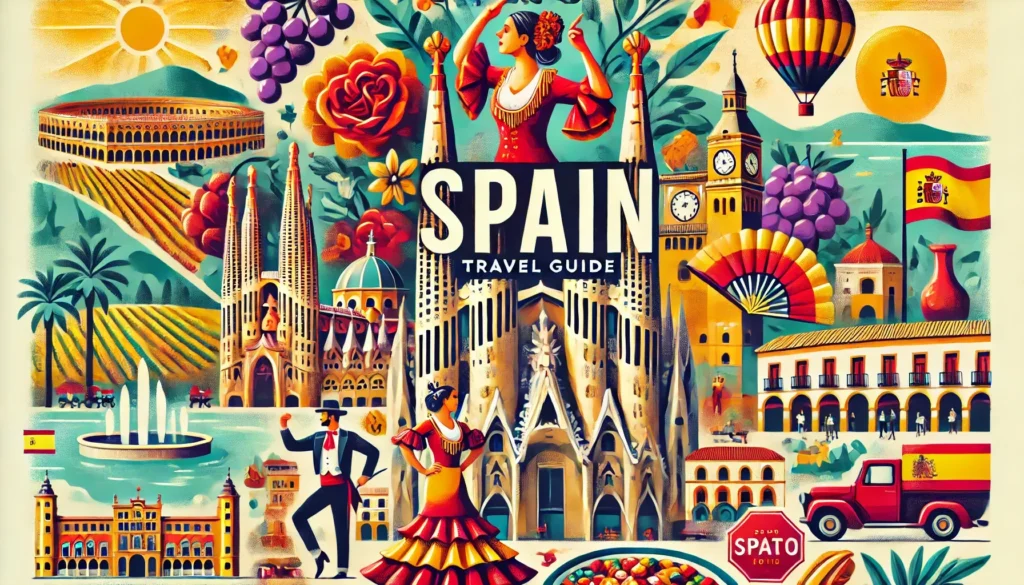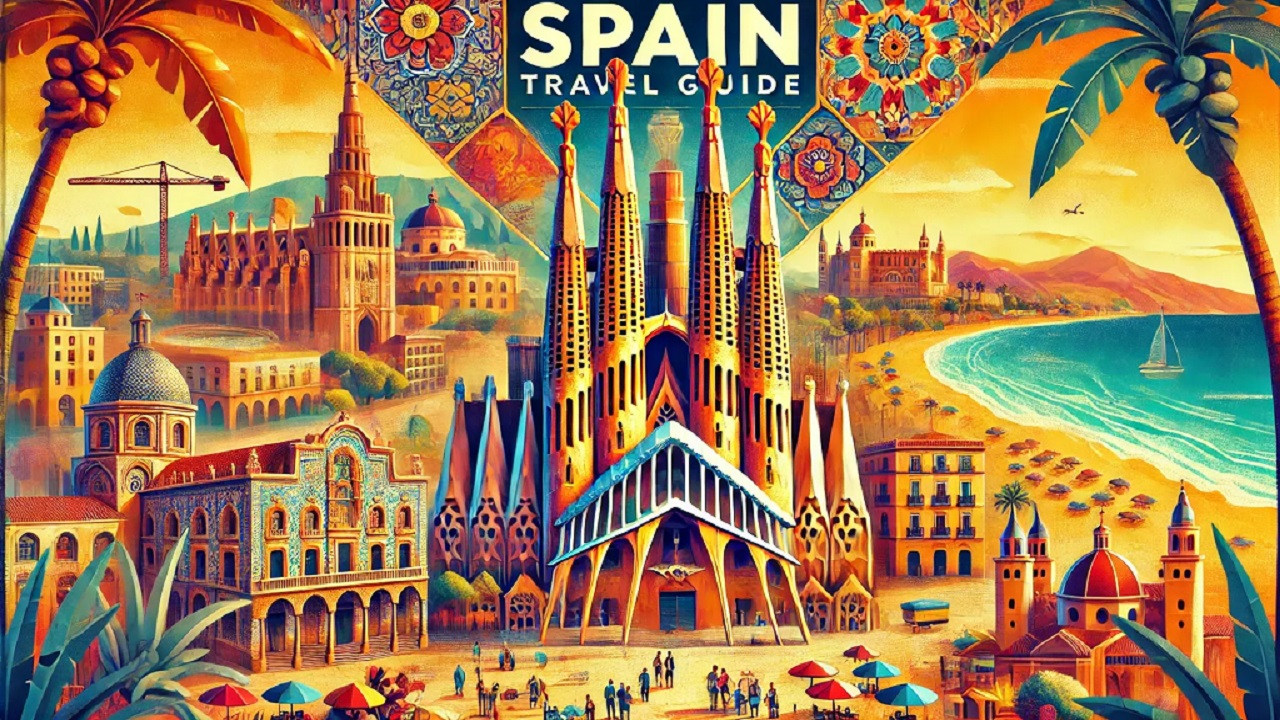Introduction
Spain is a captivating country that attracts millions of travelers each year with its rich history, vibrant culture, and stunning landscapes. This ultimate travel guide aims to provide you with essential information and tips to make the most of your journey through Spain.
Understanding Spain: A Brief Overview
The Rich History of Spain
Spain’s history is marked by a tapestry of diverse influences, from the ancient Iberians to the Romans, the Moors, and the Christian Reconquista. Each period has left its mark on the country’s architecture, culture, and even language.
Visitors can explore the ruins of Roman cities like Mérida, Gothic cathedrals like the Sagrada Familia in Barcelona, and the palaces of the Moorish era like the Alhambra in Granada. This rich historical backdrop offers a glimpse into the events and cultures that shaped modern Spain.
The Unique Culture and Traditions
Spanish culture is an exciting mix of regional identities, languages, and traditions. Flamenco dancing originates from Andalusia, while the Basque people have their unique customs and language, Euskara. Festivals such as La Tomatina and San Fermín (Running of the Bulls) draw visitors from all over the globe.
The country’s deep-rooted traditions are reflected in its art, music, and local festivities, making it an extraordinary destination for cultural exploration.
The Spanish Cuisine
One cannot talk about Spain without mentioning its exquisite cuisine. Renowned for its flavorful dishes, Spanish food varies by region. From tapas in Andalusia to pintxos in the Basque Country, the culinary diversity is astonishing.
- Paella: A famous rice dish originating from Valencia, traditionally made with saffron, seafood, or meats.
- Tapas: Small plates served as appetizers, perfect for sharing.
- Churros: Fried dough pastries served with thick chocolate for dipping.
Whether dining in a bustling local market or a Michelin-starred restaurant, the flavors of Spain will leave you craving more.
Read More: 10 Best East Coast Beaches for Families from Maine to Florida
Planning Your Trip to Spain
Best Time to Visit Spain
The best time to visit Spain depends on your interests. Spring (April to June) and fall (September to October) are ideal for comfortable temperatures and fewer crowds. However, summer can be vibrant, especially along the coasts, where beach festivals and outdoor activities are plentiful.
Winter is perfect if you’re interested in skiing in the Sierra Nevada mountains or experiencing the unique holiday celebrations in cities like Barcelona and Madrid.
Essential Travel Documents
Before embarking on your journey to Spain, ensure you have all necessary travel documents. Citizens from the EU, US, Canada, and several other countries can enter Spain without a visa for tourism or business stays of up to 90 days.
Always check the latest entry requirements before your travel, including health regulations, especially pertinent in times of changing global health scenarios.
Budgeting for Your Trip
Your budget for Spain can vary significantly based on your travel style. For budget travelers, hostels, local eateries, and public transportation can help keep costs down. Mid-range travelers may opt for boutique hotels and restaurants, while luxury travelers can enjoy high-end accommodations and fine dining experiences.
On average, a daily budget can be estimated as follows:
- Budget: €50-€70
- Mid-range: €100-€200
- Luxury: €250 and above
Always plan for extra expenses, such as entrance fees for attractions, souvenirs, and occasional splurges on dining.

Top Destinations in Spain
Exploring Madrid: Spain’s Capital
Madrid, the heart of Spain, is renowned for its vibrant nightlife, rich art legacy, and abundant parks. Key attractions include the grand Royal Palace, the iconic Prado Museum, and the bustling streets of Gran Vía.
Adventure seekers can also enjoy Madrid’s numerous green spaces, such as Retiro Park, where you can rent a rowboat or simply enjoy a leisurely stroll.
The Charms of Barcelona
Barcelona is famous for its unique architecture, most notably the works of Antoni Gaudí, like the Sagrada Família and Park Güell. The city’s Gothic Quarter is a maze of narrow streets filled with shops, eateries, and history.
Be sure to take a day to relax at one of Barcelona’s beautiful beaches, or immerse yourself in the local culture at a flamenco show or a bustling tapas bar.
The Historic Granada
Granada is a city that beautifully showcases the influence of the Moors in Spain. The Alhambra, a stunning hilltop fortress, is a must-visit for its intricate architecture and lush gardens.
The nearby Albaicín neighborhood, with its narrow winding streets and whitewashed buildings, offers stunning views of the Alhambra, particularly at sunset.
The Coastal Beauty of Valencia
Valencia boasts a stunning coastline and is known for its vibrant arts scene, with landmarks like the City of Arts and Sciences. Food enthusiasts will delight in authentic paella, as the dish was first created in this region.
Visiting during the Fallas Festival in March offers a unique cultural experience characterized by spectacular fireworks, parades, and, of course, intricately designed sculptures that are set ablaze in a grand celebration.
Must-Visit Attractions in Spain
Spain’s World Heritage Sites
Spain is home to numerous UNESCO World Heritage Sites encompassing both cultural and natural treasures. From the Sagrada Família in Barcelona to the Historic City of Toledo, each site offers a glimpse into Spain’s intricate history and artistry.
Other notable mentions include the Works of Antoni Gaudí, the Great Spa Towns of Europe, and the Rock Art of the Mediterranean Basin.
Spain’s Natural Wonders
The natural beauty of Spain is as impressive as its cities. The Picos de Europa, a stunning mountain range, offers breathtaking views and numerous hiking trails. Meanwhile, the beaches of Costa Brava and the volcanic landscapes of Lanzarote and Tenerife in the Canary Islands add to the country’s diverse scenery.
Famous Spanish Landmarks
Don’t miss out on visiting the iconic landmarks like the Mezquita in Córdoba, the medieval Alcázar of Seville, and the stunning cliffs of Ronda. Each of these landmarks not only represents architectural brilliance but also tells a story of Spain’s rich past.
These sites will surely leave a lasting impression and enrich your understanding of Spain’s cultural heritage.
Conclusion
Spain is an endless adventure filled with history, culture, delectable food, and magnificent landscapes. Whether you’re exploring bustling cities or remote villages, the Spanish experience promises to be unforgettable. Plan wisely and immerse yourself in the wonders Spain has to offer!
FAQs: Spain Travel Guide
What is the best time to visit Spain?
The best time to visit Spain is during the spring (March to May) or fall (September to November). The weather is pleasant, and you can avoid the peak summer tourist crowds and extreme temperatures.
Do I need a visa to travel to Spain?
If you are a citizen of an EU country or part of the Schengen Zone, you do not need a visa for Spain. Travelers from other countries, such as the U.S., Canada, and Australia, can stay up to 90 days without a visa. Always check the latest visa requirements before your trip.
What are the top tourist destinations in Spain?
Spain offers a variety of top destinations, including:
- Barcelona for its Gaudí architecture and beaches
- Madrid for world-class museums like the Prado
- Seville for its historic landmarks like the Alcázar and Flamenco culture
- Valencia for its futuristic City of Arts and Sciences
- Granada for the iconic Alhambra Palace.
What languages are spoken in Spain?
The official language of Spain is Spanish (Castilian). However, regional languages such as Catalan, Basque, and Galician are also spoken in specific areas like Barcelona, the Basque Country, and Galicia.
How can I travel around Spain?
Spain has an excellent transportation network. You can travel between cities via:
- High-speed trains (AVE), which connect major cities like Madrid, Seville, and Barcelona
- Buses, which offer extensive and economical options
- Domestic flights for long distances
- Renting a car for rural or coastal exploration.
